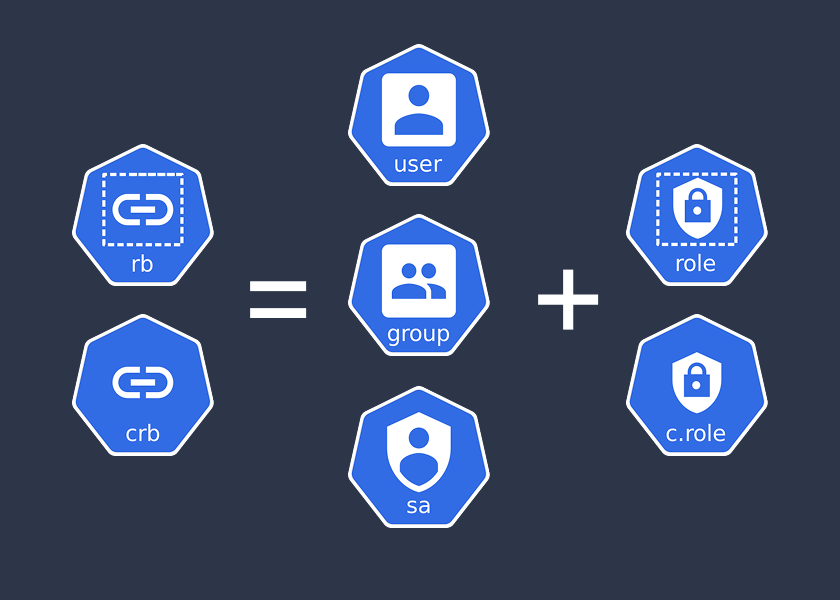Kubernetes RBAC Made Simple: Access Control for Everyone
A simple breakdown of who can do what in your Kubernetes cluster
Role-Based Access Control (RBAC) in Kubernetes is a straightforward way to manage permissions. It controls who can access what resources in your cluster. Let’s break down the key components: Subjects, Roles, ClusterRoles, RoleBindings, and ClusterRoleBindings.
Subjects: Who Gets Access
Subjects are the entities that need access to Kubernetes resources. They include:
Users: Individual people, like developers or admins, interacting with the cluster.
Groups: Collections of users, useful for assigning permissions to multiple people at once.
Service Accounts: Special accounts for applications or processes running inside the cluster.
Why it matters: Subjects define who or what is requesting access, so you can grant permissions to the right entities.
Roles and ClusterRoles: Defining Permissions
A Role specifies what actions (like get, create, or delete) can be performed on specific resources (like pods or deployments) within a single namespace. For cluster-wide control, use a ClusterRole, which applies to resources across all namespaces or cluster-level objects like nodes and persistent volumes.
Why it matters: Roles are namespace-scoped, while ClusterRoles provide broader control for cluster-wide resources or cross-namespace access. Use Roles for specific projects and ClusterRoles for global management tasks.
apiVersion: rbac.authorization.k8s.io/v1
kind: Role
metadata:
namespace: default
name: pod-reader
rules:
- apiGroups: [""]
resources: ["pods"]
verbs: ["get", "list"]This example Role allows getting and listing pods in the default namespace.
apiVersion: rbac.authorization.k8s.io/v1
kind: ClusterRole
metadata:
name: node-reader
rules:
- apiGroups: [""]
resources: ["nodes"]
verbs: ["get", "list"]This example ClusterRole allows getting and listing nodes across the entire cluster.
RoleBindings and ClusterRoleBindings: Connecting Subjects to Roles
A RoleBinding links a Subject to a Role, granting the permissions defined in the Role to that Subject within a specific namespace. For cluster-wide permissions, use a ClusterRoleBinding, which connects a Subject to a ClusterRole, applying permissions across all namespaces or to cluster-level resources.
Why it matters: RoleBindings are for namespace-specific access, while ClusterRoleBindings enable broader access control. Use ClusterRoleBindings when Subjects need to manage cluster-wide resources like nodes.
apiVersion: rbac.authorization.k8s.io/v1
kind: RoleBinding
metadata:
name: read-pods-binding
namespace: default
subjects:
- kind: User
name: jane
apiGroup: rbac.authorization.k8s.io
roleRef:
kind: Role
name: pod-reader
apiGroup: rbac.authorization.k8s.ioThis RoleBinding lets the user jane use the pod-reader Role to access pods in the default namespace.
apiVersion: rbac.authorization.k8s.io/v1
kind: ClusterRoleBinding
metadata:
name: read-nodes-binding
subjects:
- kind: User
name: jane
apiGroup: rbac.authorization.k8s.io
roleRef:
kind: ClusterRole
name: node-reader
apiGroup: rbac.authorization.k8s.ioThis ClusterRoleBinding lets the user jane use the node-reader ClusterRole to access nodes cluster-wide.
Key Takeaways
Subjects (Users, Groups, Service Accounts) are who needs access.
Roles (namespace-scoped) and ClusterRoles (cluster-wide) define what actions are allowed on which resources.
RoleBindings (namespace-scoped) and ClusterRoleBindings (cluster-wide) connect Subjects to Roles or ClusterRoles.
By combining these, RBAC ensures secure and granular control over your Kubernetes cluster. Start with Roles and RoleBindings for namespace-specific tasks, and use ClusterRoles and ClusterRoleBindings for broader, cluster-wide management.


